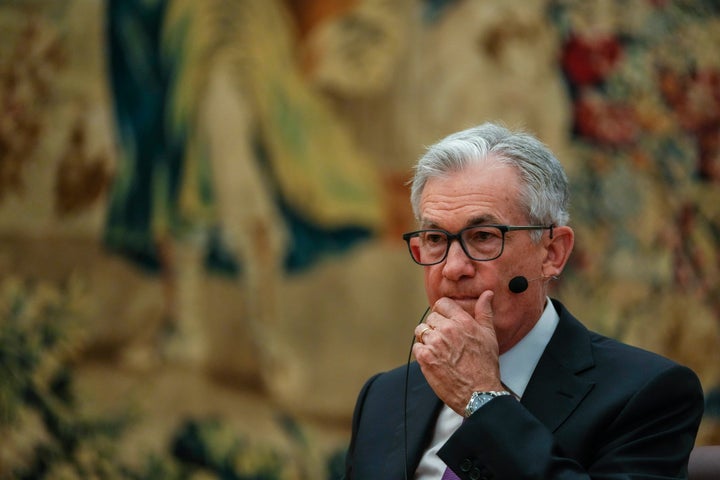
Democrats from Capitol Hill to the White House cheered the tame June inflation report out Wednesday as proof “Bidenomics” is working, which could also mean the party’s prospects in next year’s general election would also be improving.
The Consumer Price Index, which showed annual inflation at the lowest levels since March 2021, also raised another prospect: Washington, D.C., for all of its polarization and infighting, is wrapping up the last piece of dealing with the COVID-19 pandemic that exploded in March 2020.
And, some say, it may have done something very rare: Gotten the response to a big economic crisis right. Compared to past episodes where Washington has acted too little or too late, as in response to the 2008 financial crisis, or overdone things, as in the early 1980s with interest rates, the combination of big stimulus and aggressive Federal Reserve easing on interest rates, followed by continued stimulus and a steady but gradual hiking of rates, may have been a Goldilocks “just right” policy recipe.
In short, D.C. might just have pulled off the economic equivalent of a quadruple jump in ice skating.
“I think policymakers got the policy response to the pandemic roughly right,” said Mark Zandi, chief economist with Moody’s Analytics.
“It was a very costly response, close to $5 trillion in total equal to 25% of GDP, but I think necessary given how damaging the pandemic was to our economy,” he said in an email to HuffPost.
Rep. Don Beyer (D-Va.), a former chairman of Congress’ Joint Economic Committee, was more ebullient.
“It’s too early to write the history, but if I were writing the history right now, I would say very positive things about the end of the Trump presidency, the Biden presidency with the [American Rescue Plan] and with Jay Powell and the Fed’s handling,” he said, referring to the $1.9 trillion stimulus package enacted at the beginning of Joe Biden’s term.
Compared to the rest of the world, the White House has a good case. Price increases outside of food, and energy have been the lowest among the big Group of Seven economies since 2021, while growth has been the strongest.
Of course, it may be too early to pop the champagne corks just yet. While the June report showed the 12th consecutive drop in the year-over-year inflation rate, it is only one month’s worth of data. A drop in gas prices helped hold the headline number lower and may be temporary.
And a so-called soft landing, where the Fed raises rates enough to cool inflation but not to tip the economy into a recession, is by no means assured. The history of such attempts is not good, and the economy faces headwinds from lackluster investment by businesses in new plants and equipment as well as weak economies in Europe and China.

Whether the Fed ends the pause it took in June in raising interest rates will be one factor in what happens as Fed officials meet again on July 25 and 26 to decide what to do. The June report has given Fed doves more ammunition against further rate hikes.
While he said it looks like the Fed is set on raising rates again, Zandi cautioned against that.
“The economy is slowing and inflation moderating on script with the rate hikes to date,” he added.
Rakeen Mabud, chief economist with a group of liberal economics experts known as Groundwork Collaborative, said raising rates could roll back some of the gains made possible by historically low unemployment.
“Two months of rising Black unemployment foreshadows disastrous consequences for our labor market if Chair Powell resumes rate hikes this month,” Maboud said. “The Fed should stand down before it causes any further damage to our economy.”.
Douglas Holtz-Eakin, president of the conservative American Action Forum think tank and a former Congressional Budget Office director, warned the CPI is likely to bounce back up to 4% year-over-year once gas prices steady and so the Fed needs to keep hiking until it gets to its target 2% annual inflation rate.
“It will continue, and they will continue to raise rates until it does,” he said. “That’s for sure.”
Holtz-Eakin also said he doesn’t think policymakers got things right after the initial stages of the pandemic. He said the Fed’s initial reaction and the stimulus packages enacted on a bipartisan basis in 2020 deserved praise. But after that, things went off track.
“There was way too much fiscal stimulus. There was way too much monetary stimulus. It got no additional growth,” he said. “It should have been done cheaper with less inflation.”
“It should have been done cheaper with less inflation.”
– Douglas Holtz-Eakin, president of. the American Action Forum
And while Holtz-Eakin said a soft landing would be ideal, “it still remains against the empirical odds.”
But for now, Democrats are happy to take a victory lap on what has been the biggest blemish on an economic record that, in many ways, has surpassed its pre-pandemic, Trump-era performance.
“Good jobs and lower costs: That’s Bidenomics in action,” Biden said in a statement Wednesday.
“Things are moving in the right direction because we have totally rejected trickle-down economics, and we are aiming right to grow the middle class, and it’s working,” said Sen. Debbie Stabenow (D-Mich.) “We absolutely have shown that Bidenomics is about lifting people up.”
But with polls showing many Americans remaining pessimistic about the economy and disapproving of Biden’s handling of it, Beyer noted there’s a lag between the actual state of the economy and how the public perceives it, a lag that poses a danger for Democrats in the 2024 election.
“It is 16 months away. So that’s plenty of time,” Beyer said. “It does lag, but it does catch up.”


Be the first to comment